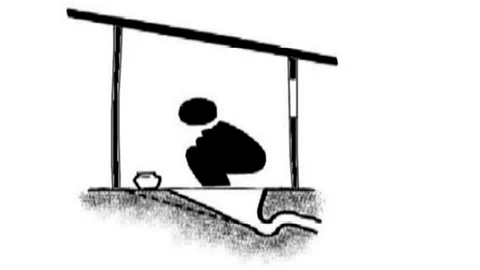
- Topics
- Feature
- Opportunities & Events
- Data
- Hindi Portal
- Topics
- Feature
- Opportunities & Events
- Data
- Hindi Portal

Open defecation continues to be practised by as high as 65% of India's rural population and only 14% of rural households have access to piped water supply leading to high rates of infant deaths and mortality. This working paper titled 'Toilets can work: Short and medium run health impacts of addressing complementarities and externalities in water and sanitation' published by the National Bureau of Economic Research, argues that evidence related to the impact of increased sanitation coverage on the reduction in diarrhoea in rural areas continues to be thin, while two studies from rural Orissa and Madhya Pradesh which have evaluated the impact of sanitation-only interventions have found modest impacts of latrine construction on latrine usage, and no impacts on health.
The paper argues that this is because these sanitation based efforts have not fully taken into consideration two factors that play a key role in water and sanitation, namely complementarities and externalities. It has often been found that latrine provision complemented with convinient water supply can enhance usage among people leading to positive health outcomes.
These complementarities between water and sanitation interventions can influence outcomes because there are multiple pathways for transmission of water borne diseases. Thus, at times, although providing latrines with access to water supply can enhance latrine use, people may not use latrines if they do not have convenient access to water which can make it difficult to keep a latrine clean, and poor maintenance may discourage use. Willingness to pay for the convenience of piped water in the home can be high as compared to that for improvements in water quality and latrines by themselves. External factors such as the impact of pathogens on recontamination of water sources can also impact health outcomes as long as open defecation persists.
The paper describes the findings of a study that looked at the impact of an integrated water and sanitation programme, the Rural Health and Environment Program (RHEP), a village-level intervention that promoted the adoption of household latrine and bathing facilities, a community water tank, and a distribution system that supplied piped water to household taps. RHEP was developed by Gram Vikas (GV), an Indian non-governmental organisation, and implemented in villages in Odisha.
RHEP was first piloted in 5 villages (340 households) in 1992. It was then expanded in four phases, adding 40 villages (3,000 households) from 1995-1998, 27 villages (2,000 households) from 1999-2001, 38 villages (3,000 households) from 2001-2003 and 160 villages (8,000 households) from 2003-2006 (Gram Vikas 2001, 2005). The study was conducted in 96 villages.
The study found that there were substantial reductions in water-related diseases. For example, episodes of severe diarrhoea declined by 30-50% and this impact persisted for at least five years. Incidence of malaria and fever was also found to decline. The paper ends by arguing that this study shows that an infrastructure-based approach can significantly reduce diarrhoea and other morbidity rates in rural areas, if both water and sanitation facilities are provided. It is thus important not to write off infrastructure based interventions in rural areas, as has been proposed in many policy conversations.
Lead image source:
Sourabh Phadke in CONRADIN, K., KROPAC, M., SPUHLER, D. (Eds.) (2010): The SSWM Toolbox. Basel: seecon international gmbh. URL: http://www.sswm.info